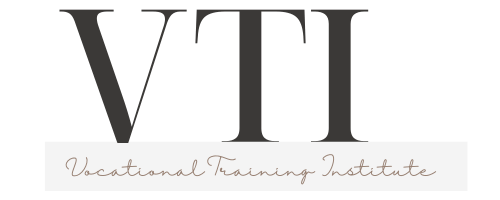Are you ready to explore the untapped potential of Indigenous communities in Canada?
Discover the challenges faced by Indigenous peoples in accessing vocational training opportunities, and the government’s initiatives to bridge this gap.
Collaborations between Indigenous communities and vocational training institutions have started to bear fruit, as success stories of Indigenous individuals in vocational training programs emerge.
Join us as we delve into the future prospects and recommendations for improving vocational training for Indigenous peoples in Canada.
Get ready to be inspired.
Key Takeaways
- Limited access to quality schools and resources and lack of necessary infrastructure and funding are major challenges in accessing vocational training for Indigenous Peoples in Canada.
- There is a need for a balance between cultural preservation and standardized curriculum, and inclusive and culturally sensitive training programs are important.
- Government initiatives to increase vocational training opportunities for Indigenous Peoples include increased funding for scholarships and bursaries, investment in infrastructure and resources, support for Indigenous businesses and entrepreneurship initiatives, and development of mentorship and coaching programs.
- Collaborations between Indigenous communities and vocational training institutions involve co-designing curriculum, incorporating Indigenous languages and practices, involving Indigenous communities in decision-making processes, supporting Indigenous-led initiatives, and providing mentorship and support services to Indigenous learners.
Challenges in Accessing Vocational Training for Indigenous Peoples
You’ll face several barriers when trying to access vocational training as an Indigenous person in Canada. These barriers stem from educational challenges and the importance of cultural preservation.
In terms of education, limited access to quality schools and resources can hinder your ability to pursue vocational training. Some Indigenous communities may lack the necessary infrastructure and funding to provide adequate educational opportunities.
Additionally, cultural preservation plays a significant role in this process. Many Indigenous communities prioritize the preservation of their traditions, languages, and knowledge systems, which can sometimes conflict with the standardized curriculum offered in vocational training programs.
It’s crucial to find a balance between preserving cultural heritage and acquiring the skills necessary for vocational success. Recognizing these challenges and working towards creating inclusive and culturally sensitive vocational training programs is essential to ensure equal opportunities for Indigenous individuals.
Government Initiatives to Increase Vocational Training Opportunities
To increase vocational training opportunities, the government in Canada has implemented various initiatives aimed at supporting Indigenous peoples. Recognizing the importance of equitable access to education and skills development, the government has allocated significant funding towards programs and services specifically designed to address the unique needs and challenges faced by Indigenous communities. These initiatives prioritize cultural sensitivity and inclusivity, ensuring that Indigenous knowledge, traditions, and languages are respected and incorporated into the training programs. Additionally, the government has implemented outreach strategies to engage with Indigenous communities and increase awareness of available vocational training opportunities. These strategies involve collaborating with Indigenous organizations, community leaders, and elders to develop tailored outreach campaigns that effectively reach and engage Indigenous individuals who may be interested in pursuing vocational training. Through these initiatives, the government aims to create a more inclusive and supportive environment for Indigenous peoples to access vocational training and improve their career prospects.
| Funding Allocation | Outreach Strategies |
|---|---|
| Increased funding for scholarships and bursaries | Collaborating with Indigenous organizations and community leaders to develop tailored outreach campaigns |
| Investing in infrastructure and resources for vocational training programs | Engaging with elders to ensure cultural sensitivity and inclusion in outreach efforts |
| Supporting Indigenous businesses and entrepreneurship initiatives | Creating partnerships with Indigenous educational institutions to expand access to vocational training programs |
| Developing mentorship and coaching programs | Establishing information sessions and workshops in Indigenous communities to raise awareness of available opportunities |
| Investing in research and data collection to better understand the needs and barriers faced by Indigenous individuals in accessing vocational training | Providing support for transportation and childcare to remove barriers to participation in vocational training programs |
Collaborations Between Indigenous Communities and Vocational Training Institutions
To ensure effective partnerships, vocational training institutions collaborate closely with Indigenous communities to develop tailored programs and initiatives that meet the specific needs and aspirations of Indigenous peoples. These collaborative partnerships are crucial for creating a supportive and culturally integrated learning environment.
Here are five ways in which vocational training institutions collaborate with Indigenous communities:
-
Co-designing curriculum: Vocational training institutions work hand in hand with Indigenous communities to co-design curriculum that reflects their cultural values, traditions, and knowledge systems.
-
Cultural integration: Vocational training institutions promote cultural integration by incorporating Indigenous languages, teachings, and practices into their training programs.
-
Community involvement: Institutions actively involve Indigenous communities in decision-making processes, ensuring their voices are heard and their perspectives are valued.
-
Indigenous-led initiatives: Institutions support and promote Indigenous-led initiatives that prioritize Indigenous knowledge systems and expertise.
-
Mentorship and support: Institutions provide mentorship and support services to Indigenous learners, recognizing and addressing the unique challenges they may face.
Through these collaborative efforts, vocational training institutions are paving the way for a more inclusive and culturally responsive vocational training experience for Indigenous peoples.
Success Stories of Indigenous Individuals in Vocational Training Programs
Indigenous learners in vocational training programs have achieved remarkable success, showcasing their determination and resilience in pursuing their career goals. These inspiring achievements highlight the immense potential of Indigenous individuals when provided with equal opportunities and support. Let’s take a look at some success stories of Indigenous learners who have carved their career pathways through vocational training programs:
| Name | Program | Current Occupation |
|---|---|---|
| Sarah | Carpentry | Construction Worker |
| David | Culinary Arts | Head Chef |
| Emily | Automotive Mechanics | Automotive Technician |
| Jacob | Welding | Welder |
| Olivia | Electrical | Electrician Apprentice |
These individuals have not only overcome challenges but have also excelled in their chosen fields, serving as role models for future Indigenous learners. Their accomplishments demonstrate the power of vocational training in empowering Indigenous communities and creating opportunities for a successful career.
Future Prospects and Recommendations for Improving Vocational Training for Indigenous Peoples in Canada
But, if you want to ensure better vocational training opportunities for Indigenous peoples in Canada, it’s important to consider future prospects and recommendations for improvement.
The barriers faced by Indigenous peoples in accessing vocational training programs are significant. To address these challenges and create a more inclusive and culturally relevant training environment, the following recommendations should be considered:
-
Increase funding for Indigenous vocational training programs to ensure adequate resources and support.
-
Develop culturally relevant curriculum and training materials that reflect the unique needs and perspectives of Indigenous communities.
-
Collaborate with Indigenous organizations and leaders to develop partnerships and mentorship programs that provide guidance and support throughout the training process.
-
Implement outreach initiatives to raise awareness about the benefits of vocational training and highlight success stories of Indigenous individuals in these programs.
-
Provide wrap-around support services, such as childcare, transportation, and mental health support, to remove barriers and create a supportive learning environment.
Conclusion
In conclusion, it’s essential to recognize the challenges faced by Indigenous peoples in accessing vocational training opportunities in Canada.
While government initiatives and collaborations between communities and training institutions have shown promise, there’s still much work to be done.
By continuing to support and empower Indigenous individuals in their pursuit of vocational training, Canada can ensure a more inclusive and equitable society.
Together, we can create a future where all Indigenous peoples have the opportunity to thrive and contribute their unique talents and skills.


